Disclosure: This article contains affiliate links. We may earn a commission from purchases at no extra cost to you, which helps our travel content.
The first time I glimpsed Angel Falls—that impossible ribbon of water plummeting from a tabletop mountain lost in clouds—I understood why the indigenous Pemón people call it Kerepakupai Merú: 'waterfall of the deepest place.' After years of paddling rivers across North America, I'd finally made it to the world's tallest uninterrupted waterfall, deep in Venezuela's Canaima National Park. As someone who grew up kayaking the Rio Grande and now splits time between court reporting in Winnipeg and budget adventure travel, I can tell you that reaching this 3,212-foot natural wonder isn't straightforward—but that's exactly what keeps it magical. This guide distills everything I learned planning and executing a week-long Angel Falls adventure without emptying my bank account. From navigating the complex logistics to finding affordable accommodations and connecting with local conservation efforts, I'll walk you through creating an unforgettable wilderness experience in one of Earth's most extraordinary landscapes.
Planning Your Journey: Getting to Angel Falls on a Budget
Let me be straight with you—reaching Angel Falls requires commitment, patience, and creative budgeting. Unlike my weekend kayaking trips back in Texas, this adventure demands strategic planning.
Your journey typically begins in Caracas, Venezuela's capital. From there, you'll need to catch a domestic flight to Puerto Ordaz or Ciudad Bolívar, followed by another small aircraft to Canaima village. These flights aren't cheap, but here's my first budget tip: book domestic flights through Venezuelan tour operators rather than international websites. The difference can be hundreds of dollars.
When I visited, I connected with Osprey Adventures in Ciudad Bolívar, who arranged my Cessna flight to Canaima for about 40% less than quotes I'd received online. The views during this flight alone—endless green canopy punctuated by mysterious tepuis (tabletop mountains)—justified the entire trip.
From Canaima, you'll travel by dugout canoe (curiara) upriver to the falls base camp. This 4-6 hour journey navigates the Carrao and Churun rivers and includes several rapids where everyone disembarks while guides navigate the empty boats through churning water—a humbling reminder of nature's power.
To maximize savings, I joined a small group tour rather than hiring a private guide. My dry bag proved invaluable during these river journeys, keeping my camera gear and court reporting journal bone dry despite splash-heavy rapids and tropical downpours.
One often-overlooked detail: bring sufficient Venezuelan bolivars in cash. ATMs are nonexistent in Canaima, and credit cards rarely accepted. The economic situation in Venezuela means exchange rates fluctuate wildly—I found changing money through official channels in Caracas provided the best rates.
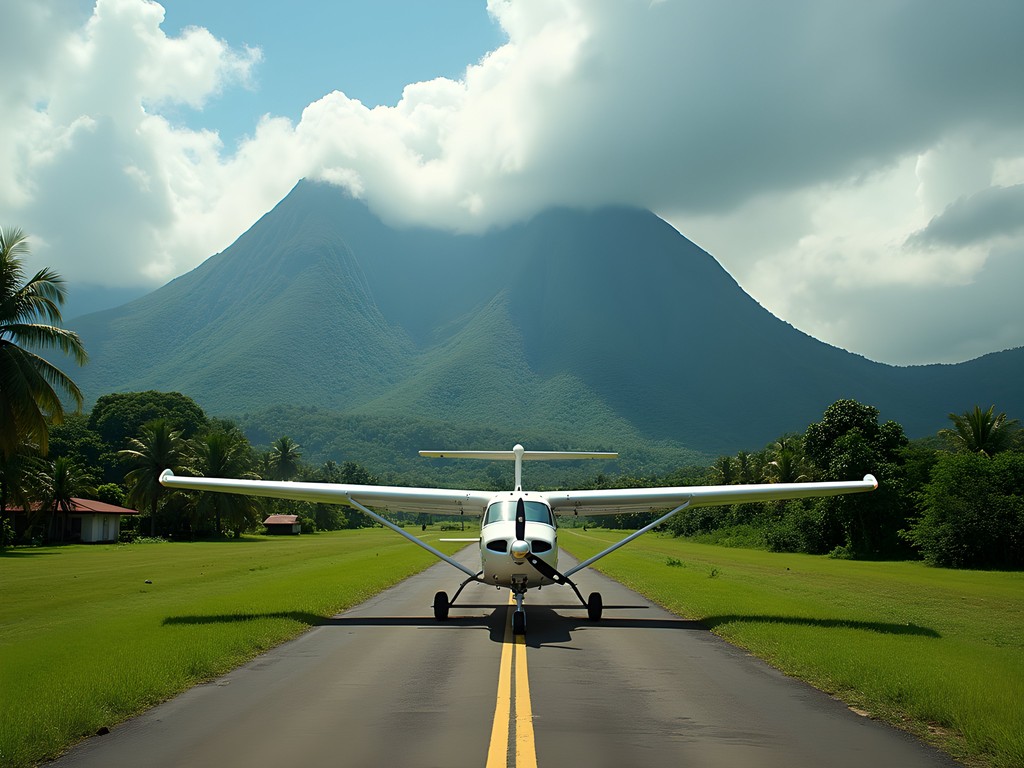
💡 Pro Tips
- Book domestic flights through Venezuelan tour operators for significant savings
- Travel during shoulder season (May or December) for lower prices and fewer tourists
- Join group tours rather than hiring private guides to split transportation costs
- Bring sufficient cash as ATMs don't exist in remote areas
Accommodation Options: Where to Stay Without Breaking the Bank
When it comes to accommodations near Angel Falls, you're not exactly looking at five-star hotels with infinity pools. And honestly, that's part of the magic.
Your main options fall into three categories: hammock camps, basic jungle lodges, or camping. During my trip, I experienced all three, each offering a different perspective on this remarkable ecosystem.
The most budget-friendly option is hammock camping at designated sites along the river route. For about $15-25 USD per night, you'll get a covered area with hammocks, basic meals, and that priceless symphony of jungle sounds as your lullaby. The camps at Isla Ratón and the Angel Falls base camp offer this simple arrangement. I still remember lying in my hammock at the base camp, watching the falls appear and disappear as clouds drifted across the cliff face—a natural spectacle no luxury hotel could match.
I brought my own camping hammock with built-in mosquito netting, which proved to be one of my smartest decisions. While basic hammocks are provided, having my own comfortable setup with bug protection made sleeping in the humid jungle infinitely more pleasant.
For those wanting slightly more comfort, jungle lodges in Canaima village range from $40-100 per night. I spent two nights at Campamento Parakaupa, a family-run lodge with simple rooms, delicious local food, and owners passionate about conservation. These lodges aren't luxurious, but they provide solid beds, occasional electricity, and sometimes even sporadic Wi-Fi—though I'd recommend embracing the digital detox.
If you're an experienced wilderness camper like me, bringing your own ultralight tent is another option, though you'll need to arrange permission with your guide. The weight constraints on small aircraft make this challenging, but not impossible. Just remember that Venezuela's wilderness demands proper preparation—this isn't like setting up at a designated campground back home.
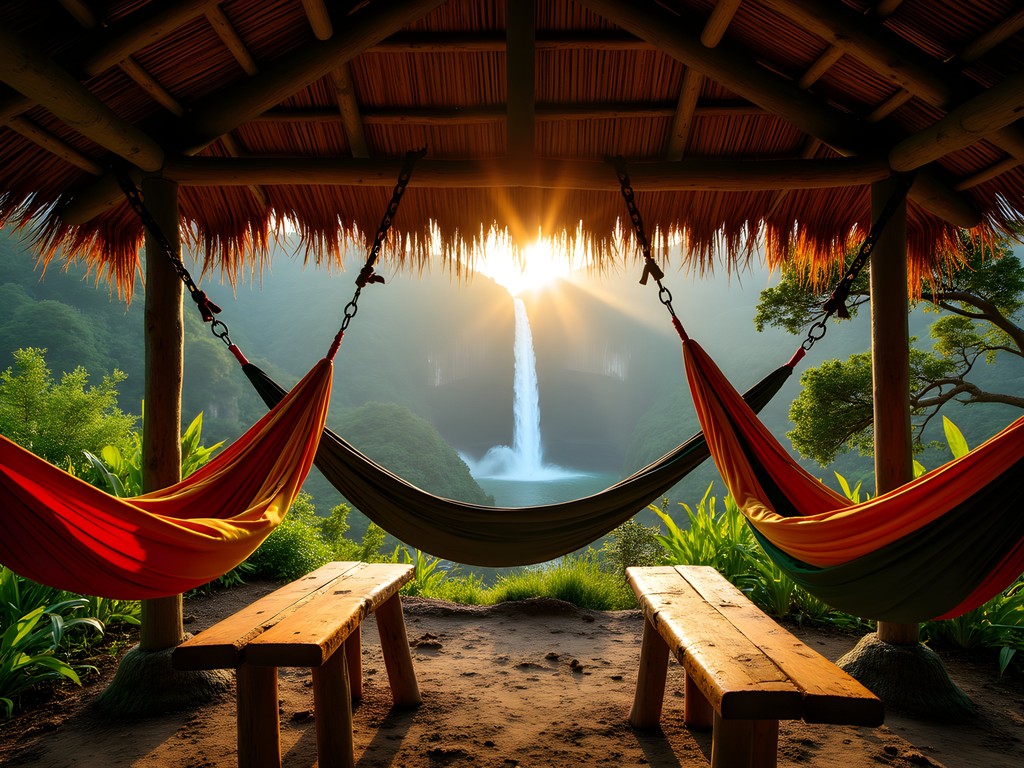
💡 Pro Tips
- Bring a lightweight hammock with mosquito netting even if hammocks are provided
- Book jungle lodges directly through local operators rather than international booking sites
- Pack a headlamp with extra batteries—electricity is unreliable or nonexistent at most accommodations
- Consider splitting your stay between hammock camps and lodges for varied experiences
Experiencing Angel Falls: Best Viewpoints and Activities
After the journey to reach Angel Falls, you'll want to experience it from every possible angle. The good news is that the most spectacular viewpoints don't cost extra—they just require some effort and timing.
The classic view comes from the base camp viewpoint, a 15-minute hike from where the curiara boats dock. This spot offers that iconic panorama you've seen in photos, though the falls are still about a mile away. I recommend visiting this viewpoint at different times of day—the way morning light catches the water versus the golden afternoon glow creates entirely different experiences.
For the more adventurous (and my personal favorite), the hike to Mirador Laime rewards you with an up-close encounter with the falls. This 1-hour trek through dense jungle culminates at a natural pool where you can swim literally at the base of Angel Falls. The water is surprisingly cold—a shock against the humid jungle heat—but swimming beneath the world's tallest waterfall is an experience that defies description.
During my visit, I woke at 5:00 AM to hike to this spot, arriving just as the first light hit the top of the falls. I had the entire pool to myself for nearly an hour before other groups arrived. My waterproof camera captured some of my favorite photos ever as the rising sun created rainbows in the falls' mist.
Another perspective comes from the river itself. Many tours include kayaking or dugout canoe excursions that approach different angles of the falls. As someone who's paddled since childhood, navigating these waters with local guides was humbling—their knowledge of every current, eddy, and hidden rock demonstrated generations of river wisdom.
For those with deeper pockets, helicopter tours offer aerial views, but at $200+ per person, they're not budget-friendly. Honestly, the ground and water-based perspectives provide more intimate connections with this landscape. The tepui (table mountain) from which Angel Falls drops—Auyán-tepui—remains largely unexplored, with expeditions requiring special permits and significant expense.
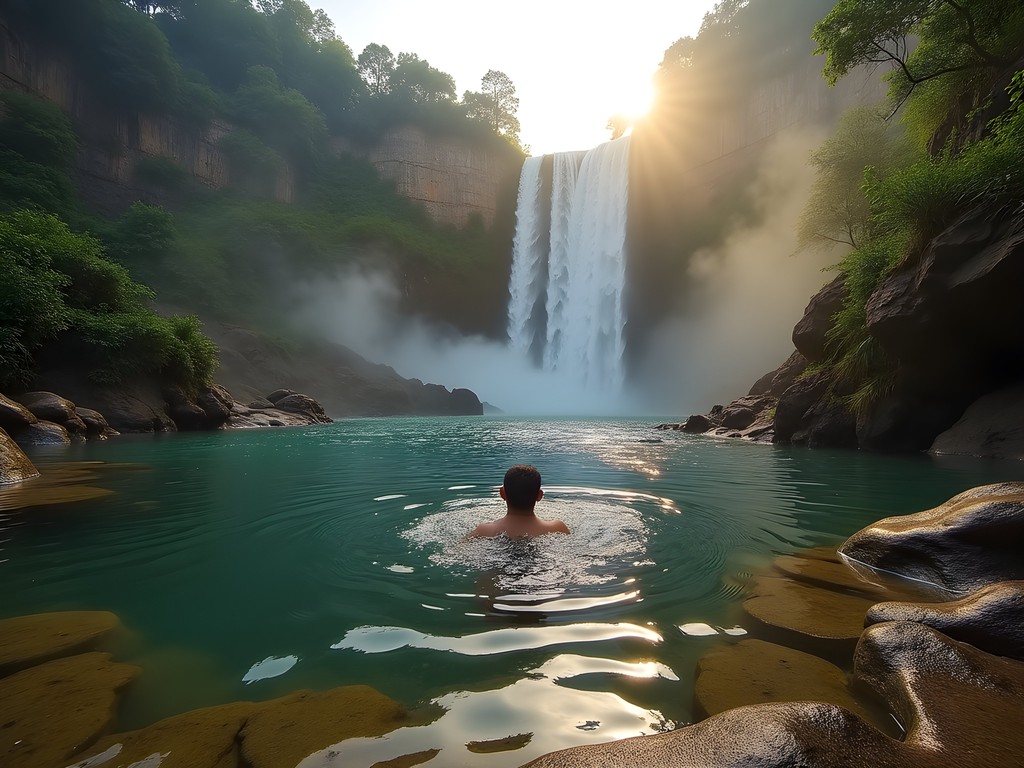
💡 Pro Tips
- Visit viewpoints at different times of day for varied lighting and fewer crowds
- Pack quick-dry clothing for the Mirador Laime hike—you'll get soaked from both sweat and falls spray
- Bring polarizing filters for your camera to cut through water glare and capture the falls' true colors
- Allow at least two full days at the falls to increase your chances of clear weather views
Cultural Connections: Engaging with Pemón Communities
One aspect of visiting Angel Falls that transformed my experience from mere tourism to meaningful travel was connecting with the indigenous Pemón people who call this region home. Their relationship with these lands stretches back centuries, and their stewardship has helped preserve this ecosystem despite increasing tourism pressures.
In Canaima village and surrounding areas, many guides and boat operators are Pemón. Beyond their practical skills navigating the challenging rivers, they offer profound insights into the ecology, mythology, and conservation challenges of the region. My guide, Eduardo, shared stories about how his grandfather discovered routes through rapids that tourists now navigate and explained the Pemón names for features we passed—names far older than the colonial 'Angel Falls' moniker (named after American aviator Jimmy Angel who crash-landed atop Auyán-tepui in 1937).
Several community-based tourism initiatives allow visitors to learn about traditional crafts, medicinal plants, and conservation efforts. In the village of Kavac, I participated in a workshop on traditional basket weaving, using techniques passed down through generations. The intricate patterns represent elements of the landscape—rivers, mountains, and wildlife—encoding ecological knowledge into everyday objects.
Food offers another window into Pemón culture. At camps and lodges, you'll likely enjoy casabe (cassava bread), fresh river fish, and hearty sancochos (stews). These meals aren't fancy, but they're delicious and representative of traditional subsistence patterns adapted to the jungle environment.
As someone who grew up in a border town where cultural exchange was daily life, I was particularly interested in how tourism impacts indigenous communities. Many Pemón guides expressed both appreciation for the economic opportunities tourism provides and concern about maintaining cultural integrity. The most respectful approach as visitors is to ask permission before taking photos of people, learn at least basic Spanish phrases, purchase crafts directly from artisans, and listen more than we speak.
Remember that you're a guest in Pemón ancestral territory—the falls themselves hold spiritual significance beyond their status as a natural wonder or bucket-list destination.
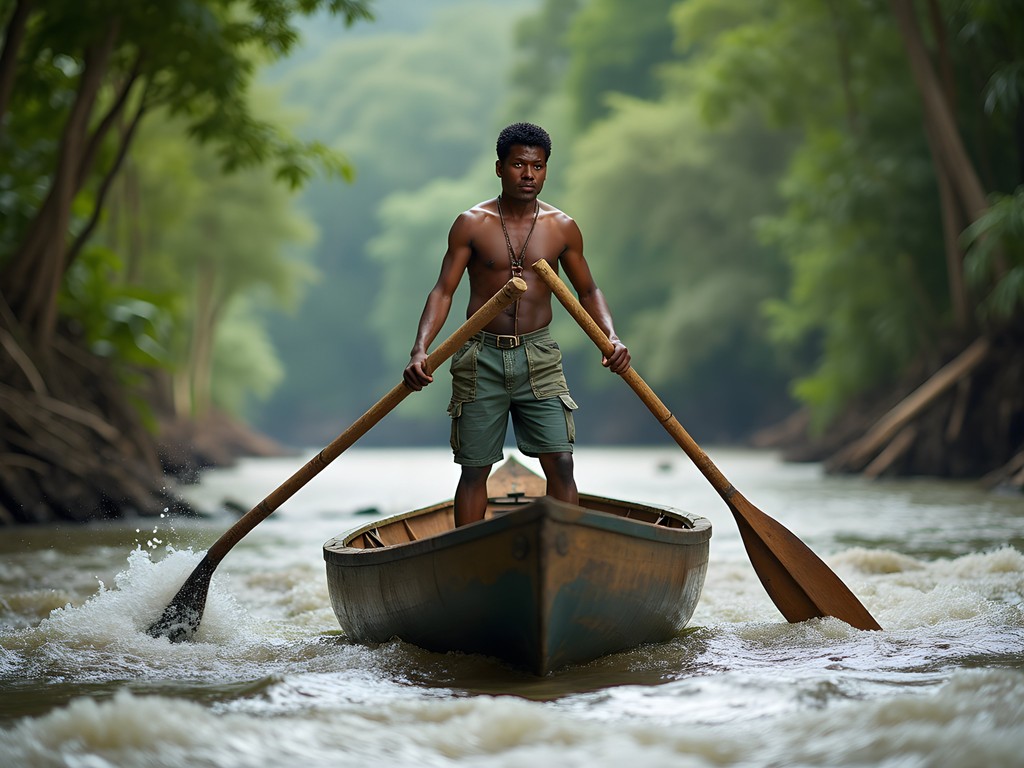
💡 Pro Tips
- Learn basic Spanish phrases—even simple greetings go a long way in showing respect
- Purchase crafts directly from artisans rather than through resellers
- Ask permission before photographing people or cultural activities
- Participate in community-based tourism initiatives that directly benefit local families
Conservation Challenges: Protecting Angel Falls' Fragile Ecosystem
As a lifelong advocate for river conservation who's witnessed environmental litigation firsthand through my court reporting work, I couldn't visit Angel Falls without considering the conservation challenges facing this UNESCO World Heritage site.
Canaima National Park encompasses over 30,000 square kilometers of ancient landscape, including the distinctive tepuis that formed over two billion years ago. These isolated tabletop mountains harbor unique ecosystems with species found nowhere else on Earth—think of them as sky islands with their own evolutionary trajectories.
Despite its protected status, the region faces multiple threats. Illegal gold mining operations in parts of the park introduce mercury contamination to waterways. Climate change alters rainfall patterns, potentially affecting the falls' flow and surrounding cloud forests. And even well-intentioned tourism can strain local resources and generate waste in an area with minimal infrastructure.
During my stay, I connected with researchers from Fundación AndinaVida, a Venezuelan conservation organization monitoring tepui ecosystems. Their work tracking endemic species and water quality provides crucial data for protection efforts. What struck me most was how they've integrated traditional Pemón ecological knowledge with scientific research—acknowledging that indigenous communities have been the original conservationists of these lands.
As visitors, our choices matter. I packed out every bit of trash I generated, using my reusable water bottle to avoid plastic waste. This purifier was invaluable—I could safely fill up from rivers and streams throughout the journey, eliminating dozens of single-use bottles while staying hydrated in the intense humidity.
Choosing tour operators with demonstrated commitments to sustainability makes a difference too. Companies like Osprey Adventures and Angel-Eco Tours employ local guides, contribute to community projects, and follow low-impact practices. They cost slightly more than budget operators, but the extra investment supports conservation efforts directly.
The delicate balance between promoting tourism that generates economic benefits for local communities while protecting the ecosystem requires thoughtful management. As visitors, our role is to tread lightly, learn deeply, and support initiatives that preserve this wonder for future generations.
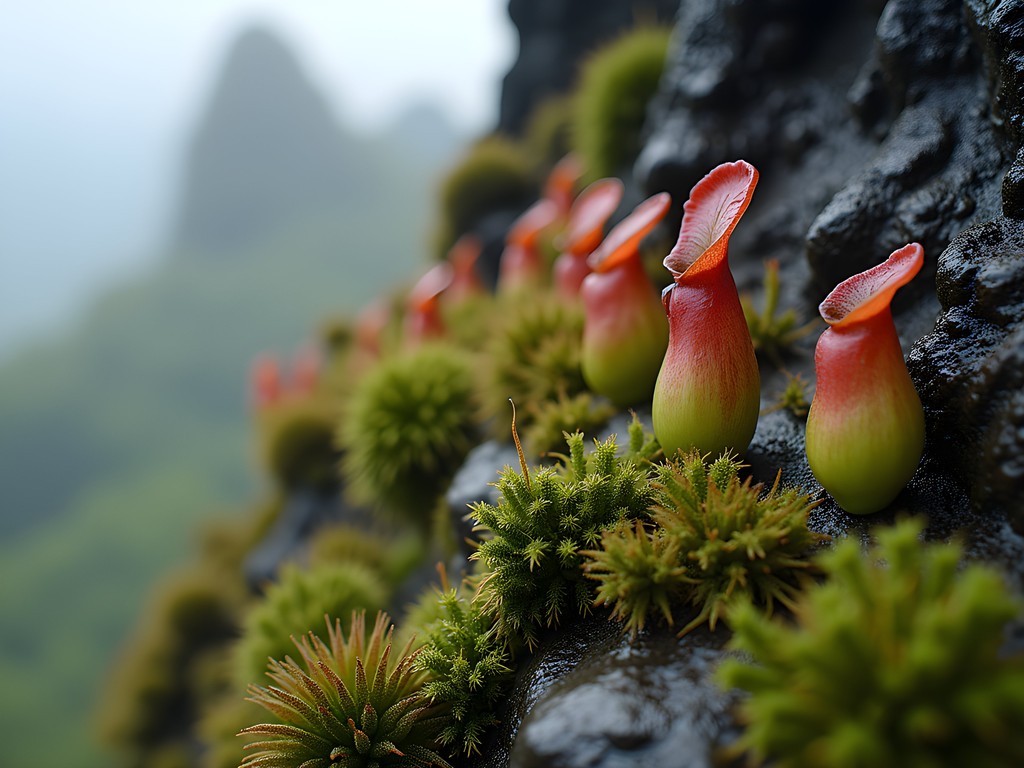
💡 Pro Tips
- Pack out all trash—there's no waste management infrastructure in remote areas
- Use biodegradable soap and shampoo when bathing in rivers
- Choose tour operators with explicit environmental commitments and local employment practices
- Consider donating to conservation organizations working in Canaima National Park
Practical Packing Tips: What You Really Need
Having navigated everything from Texas border town kayaking trips to Canadian wilderness expeditions, I've refined my packing approach over years of budget travel. For Angel Falls specifically, the combination of remote location, humid climate, and weight restrictions on small aircraft demands strategic packing.
First, the non-negotiables: documentation and money. Beyond your passport, bring printed copies of all reservations, permits, and insurance documents. Venezuela's complex economic situation means cash is essential—U.S. dollars are widely accepted alongside bolivars, but bring small denominations and keep them secure in a money belt worn under clothing.
For clothing, think lightweight, quick-dry, and versatile. I packed just three moisture-wicking t-shirts, two pairs of convertible pants/shorts, and enough underwear and socks for the journey. A long-sleeve shirt provides sun and insect protection, while a light rain jacket is essential during the wet season. Despite the tropical location, evenings can feel cool in hammock camps—I was grateful for my packable down jacket on several occasions.
Footwear requires special consideration. I brought trail running shoes for hiking and water sandals for river crossings and camp. The trail to Mirador Laime gets slippery and muddy—proper traction is non-negotiable for safety.
Health supplies deserve careful attention. Beyond basic first aid, pack high-SPF sunscreen, insect repellent containing DEET or picaridin, and antimalarial medication if prescribed by your doctor. My water filter provided backup water purification when my main bottle needed cleaning.
For electronics, consider a waterproof case for your smartphone and extra batteries for cameras—charging opportunities are limited. A headlamp is essential, as electricity in camps is either unreliable or nonexistent.
What I didn't bring proved just as important as what I did. Leave behind anything heavy that serves a single purpose. Forget styling products, fancy outfits, or heavy books. The tepuis don't care about your appearance, and a single Kindle holds more reading material than you'll have time for.
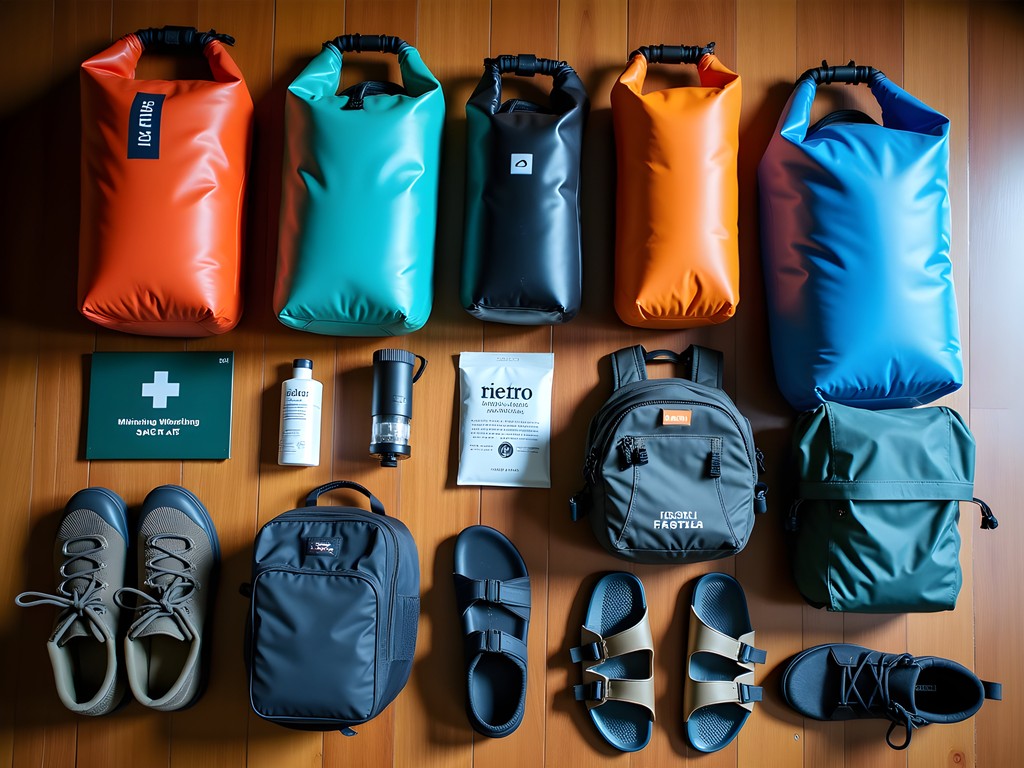
💡 Pro Tips
- Pack everything in dry bags or waterproof stuff sacks—your gear will get wet during river travel
- Bring twice as many ziplock bags as you think you'll need for electronics, documents, and keeping wet items separate
- Include a small clothesline and biodegradable soap for washing quick-dry clothing at camps
- Minimize weight but don't skimp on sun protection, insect repellent, or first aid supplies
Final Thoughts
As I sat on the small Cessna departing Canaima, watching Angel Falls shrink into the vast green expanse below, I felt that familiar mix of gratitude and responsibility that comes from witnessing Earth's most spectacular places. This journey isn't just about checking off a bucket-list item—it's about connecting with a landscape that demands we reconsider our relationship with the natural world. Despite the logistical challenges and budget constraints, reaching Angel Falls remains one of the most accessible grand adventures for travelers willing to plan carefully and embrace the unexpected. The memories of mist on my face at Mirador Laime, conversations with Pemón guides about their ancestral lands, and the humbling perspective gained from standing beneath the world's tallest waterfall continue to influence my approach to both travel and conservation work back home. Angel Falls isn't just a destination—it's a reminder of what we stand to lose if we don't protect our planet's wild places. Will you answer its call?
✨ Key Takeaways
- With careful planning, Angel Falls can be experienced on a modest budget through group tours and hammock camping
- The dry season (December-April) offers the best viewing conditions, though the falls flow year-round
- Engaging respectfully with Pemón communities enhances understanding of the region's cultural significance
- Choosing environmentally responsible tour operators directly supports conservation efforts
📋 Practical Information
Best Time to Visit
December through April (dry season)
Budget Estimate
$800-1200 USD for a week-long trip (excluding international flights)
Recommended Duration
5-7 days
Difficulty Level
Moderate
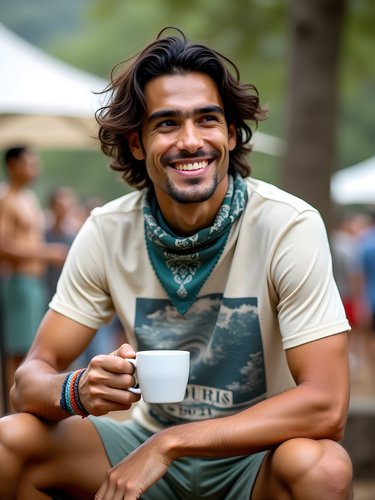

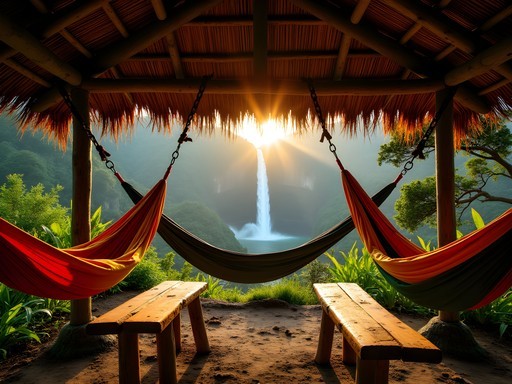














Comments
Savannah Torres
This brought back so many memories! That moment when you first see the falls after hours of traveling is absolutely magical. One tip I'd add for families (since that's my focus): my kids were absolutely fine with the basic accommodations at the camps, but I wish I'd packed more quick-dry clothing. Everything stays damp in the jungle! Also, the night sky from the hammocks at the riverside camps was one of the most spectacular stargazing experiences we've ever had - no light pollution whatsoever. My 8-year-old still talks about the caimans we spotted during the boat ride. Worth noting that some camps now offer family hammocks that fit 2 people if you have younger children who might get scared at night.
springstar529
Savannah, did your kids handle the small plane ride okay? My 6-year-old gets motion sickness sometimes and I'm a bit worried about that part.
Savannah Torres
Great question! The flight is bumpy but short (45-60 minutes). My youngest gets carsick and was fine with children's dramamine taken 30 minutes before. The amazing aerial views were actually his favorite part of the whole trip!
RiverRafter
Just got back from Angel Falls last month and this guide would have been so helpful! One thing to add - the boat ride can be ROUGH on your back. Those wooden benches are no joke after 4+ hours. Bring something soft to sit on. Also, our guide Eduardo from the Pemón community was incredible - he showed us medicinal plants and told amazing stories about the tepuis. If anyone's on the fence about this trip - DO IT. It's challenging travel but absolutely worth it. The scale of Angel Falls is impossible to capture in photos.
blueway
Thanks for the tip about the boat seats! Adding a cushion to my packing list now.
Douglas Bradley
Excellent guide, Christopher. One thing I'd add for budget travelers is that the currency situation in Venezuela remains complex. When I visited Angel Falls last year, the unofficial exchange rates were much better than official ones. Bringing new, crisp USD in small denominations was extremely helpful. Also, the indigenous cooperatives in Canaima often offer slightly lower prices than the tour agencies in Ciudad Bolívar or Caracas. The ecological knowledge of the Pemón guides is unparalleled - they pointed out plants and wildlife I would have completely missed otherwise. For anyone concerned about the challenging economic situation, tourism directly supporting local communities is one of the most ethical ways to visit.
wanderpro
Great post! How did you handle the language barrier with the Pemón communities? Did you need Spanish or was there another way to communicate effectively? Planning a solo trip there and wondering if I should brush up on my very basic Spanish first.
springexplorer
Not the author but when I went, knowing basic Spanish was super helpful. Many guides speak some English, but in the villages, it was mostly Spanish or Pemón. Learning a few Pemón greetings went a long way in building goodwill!
wanderpro
Thanks for the insight! Will definitely download a Spanish language app before going.
Adam Nichols
Excellent guide, Christopher! I'd add that the dry season (December-April) is definitely the optimal time to visit for budget travelers. During rainy season, flights get canceled more frequently which can lead to unexpected accommodation costs while waiting. Also, the indigenous communities near Canaima offer handcrafted items that make meaningful souvenirs - purchasing directly from them is both more ethical and usually cheaper than buying at the airport. The hammock camping option you mentioned saved me about 60% compared to the lodges, and the experience of sleeping under that star-filled sky was priceless.
Christopher Harris
Great points, Adam! Completely agree about the dry season being more reliable for budget planning. And yes, the hammock camping was one of my favorite experiences too - nothing like falling asleep to the distant sound of the falls.
GlobalNomad
How's the internet situation there? Need to stay somewhat connected for work emergencies.
WanderWoman
Basically non-existent at the falls themselves. You'll get some coverage in Canaima village but it's spotty. I'd prepare to be offline for a few days!
Christopher Harris
WanderWoman is right - very limited connectivity once you leave Canaima. It's actually one of the things I appreciated most about the experience!
mountaingal
Great post! Did you take the boat or fly to see the falls? I'm trying to figure out which option gives the best views for photography.
Christopher Harris
Thanks for asking! I actually did both - flew in on a small Cessna which gives you those incredible aerial views (best for photography if you can get a window seat), then took the boat up the river to the base of the falls. If you're serious about photography, I'd recommend bringing a good zoom lens and a waterproof case for the boat journey as you'll get wet!
mountaingal
That's perfect advice, thank you! I'll definitely look into doing both if my budget allows.
journeyqueen
Those photos are STUNNING! Angel Falls just moved to the top of my travel list!
exploreexplorer
This looks incredible! How safe is Venezuela for tourists right now? I've heard mixed things but Angel Falls has been on my bucket list forever.
Adam Nichols
I visited Angel Falls last year and found that while Venezuela does have its challenges, the tourist areas around Canaima National Park are generally well-managed and safe. The key is working with reputable tour operators who handle all the logistics. The political situation doesn't really impact the remote areas where Angel Falls is located. Just bring USD cash as cards aren't widely accepted and follow standard safety precautions.
exploreexplorer
Thanks Adam, that's really helpful! Did you book your tour before arriving or once you got there?
Adam Nichols
I booked before arriving through a tour company based in Ciudad Bolívar. Definitely recommend doing it in advance - you'll get better rates and it makes the entry process smoother.
oceanqueen
How difficult was the hike to the base of the falls? I'm traveling with my 65-year-old mother who's reasonably fit but I'm wondering if it's doable for her.
Douglas Bradley
Not the author, but I took my aunt (62) last year. The standard route from Canaima involves a boat ride and then a moderately challenging 1-hour hike on uneven terrain. There's an alternative viewpoint that requires less hiking - ask your guide about the 'Mirador Laime' option. The humidity is more challenging than the terrain itself.
oceanqueen
That's super helpful, Douglas. Thank you! We'll look into that Mirador option.
Venture X
Premium card with 2X miles, $300 travel credit, Priority Pass